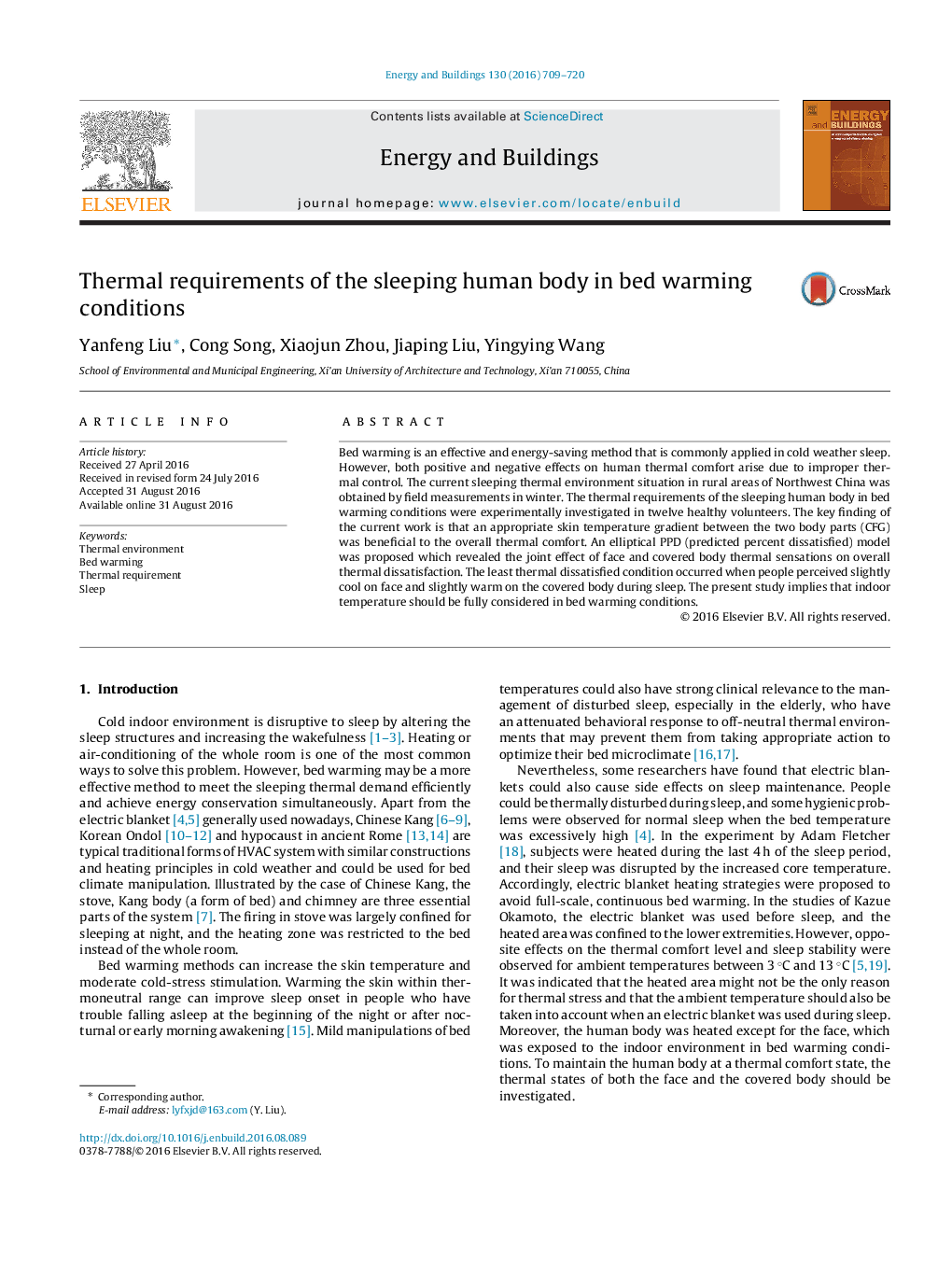| Article ID | Journal | Published Year | Pages | File Type |
|---|---|---|---|---|
| 4919630 | Energy and Buildings | 2016 | 12 Pages |
Abstract
Bed warming is an effective and energy-saving method that is commonly applied in cold weather sleep. However, both positive and negative effects on human thermal comfort arise due to improper thermal control. The current sleeping thermal environment situation in rural areas of Northwest China was obtained by field measurements in winter. The thermal requirements of the sleeping human body in bed warming conditions were experimentally investigated in twelve healthy volunteers. The key finding of the current work is that an appropriate skin temperature gradient between the two body parts (CFG) was beneficial to the overall thermal comfort. An elliptical PPD (predicted percent dissatisfied) model was proposed which revealed the joint effect of face and covered body thermal sensations on overall thermal dissatisfaction. The least thermal dissatisfied condition occurred when people perceived slightly cool on face and slightly warm on the covered body during sleep. The present study implies that indoor temperature should be fully considered in bed warming conditions.
Keywords
Related Topics
Physical Sciences and Engineering
Energy
Renewable Energy, Sustainability and the Environment
Authors
Yanfeng Liu, Cong Song, Xiaojun Zhou, Jiaping Liu, Yingying Wang,
